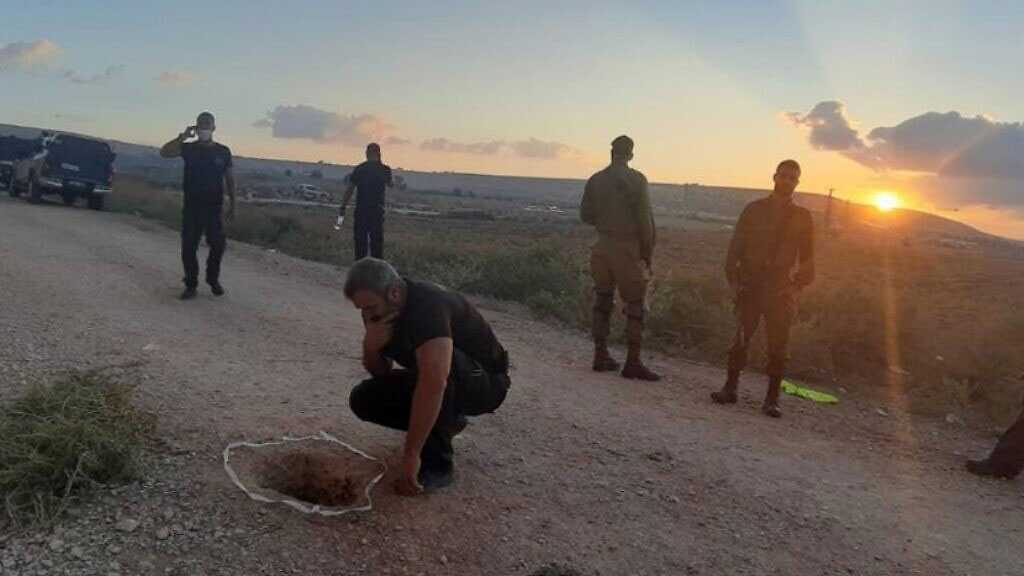
The embarrassing ‘Israeli’ failure on the security level inside the occupation entity’s prisons continued to be the subject to mock the Zionist establishment by its own media.
In a commentary published by ‘Israeli’ Haaretz newspaper, Josh Breiner asked: What happened at Gilboa Prison? Why was there an open space under the prison? And where did the prisoners go? This is what we know so far about the high-profile prison break.
The escape of six security prisoners from Gilboa Prison on Monday exposed a raft of failures in the work of the Prison Service. This begins with senior officials who apparently learned no lessons from an attempted breakout in the same prison seven years ago, as well as the failure to operate electronic measures where required, and the guard who fell asleep in the watchtower. Haaretz is attempting to sort through these issues and raise questions that need to be answered so that this does not recur.
What happened?
Between 1:20 and 1:40 A.M. on the night between Sunday and Monday, Rosh Hashana eve, six security prisoners escaped from cell No. 5 in Wing 2 of the prison in Jezreel Valley. The six escaped through a tunnel they dug from within their cell, apparently over the last six months. All the escaped convicts – five members of Islamic Jihad and one Fatah member – are residents of the nearby Jenin area. On the eve of the break, two of these prisoners were moved to the cell from which the escape took place, so they could break out as well.
It is believed the prisoners removed a metal grate that was welded into the floor of the toilet and then discovered an empty space underneath it, created when the prison was built. This space led to an area which was 2.5 meters [8.2 feet] outside the prison wall, which was close to their cell. The length of the tunnel they passed through is 30 meters, at the end of which they dug an escape shaft.
A preliminary investigation shows that the prisoners emerged one by one, waiting beside the shaft without being noticed by guards or surveillance cameras. The guard on a tower right above the shaft had fallen asleep.
At this point, the six men started moving away from the prison. Some of them were spotted by a taxi driver when they crossed a road. The driver called police at around 1:50 A.M., which led police to alert the Prison Service 25 minutes later.
Only around 3:30 A.M. was it discovered that the prisoners had escaped. Suspicions have it that the prisoners coordinated their escape with people outside the prison, who came to the area assisted by cellphones. According to police investigations, after walking three kilometers they reached a vehicle and left the area. The Shin Bet and police believe that the prisoners, or some of them, reached the village of Na’ura, where they stayed for 20 minutes, changing clothes and buying food.
Where did they go?
The main concern of police is that the six are still in “Israeli” territory, hidden in houses or outdoors, waiting for an opportunity to flee. The fact that four of the men have life sentences raises concerns that they will try to carry out resistance operations.
Another possibility is that the six have fled to the West Bank. They know the area well, especially the nearby Jenin area from which they came. Four of them have been in prison for over 20 years, so the chances that they will stay in the ‘Israeli’-occupied territories, which they’re not familiar with, are less likely.
A preferred option for ‘Israel’ is that they reached hiding places in the West Bank, given the security and intelligence control ‘Israel’s’ forces have in that area. However, apprehending them there will almost certainly entail violent confrontations with the ‘Israeli’ military personnel.
Another possibility that police believe to be highly likely is that the prisoners fled to Jordan or another country. That would make it harder for ‘Israel’ to return them to prison.
Why was there an open space under the prison?
Gilboa Prison was built in 2004 near the older Shata Prison, to allow for incarcerating a large number of security prisoners during the second intifada. Due to the need to erect it hastily, construction was expedited so that the prison’s wards were built on concrete pillars, with open spaces underneath. The prison’s engineering plan was published on the site of the architects who had planned it. It’s not known if the prisoners used this knowledge, but this is clearly a security failure of the Prison Service, which did not remove the plan once it went online.
What sanctions were imposed on other security prisoners?
After the breakout, the conditions of 4,000 security prisoners were further restricted. Thus, the time they are allowed to be in the yard was reduced from four hours to one hour a day. Many searches have been conducted in their cells, with Islamic Jihad prisoners moved to other wings, despite the ideological and religious differences between prisoners, something that is creating a lot of tension.
On Wednesday Islamic Jihad prisoners torched their cells at Ketziot and Ramon prisons, clashing with guards. They were protesting the intent to move them to other prisons following the escape from Gilboa.













No comments:
Post a Comment